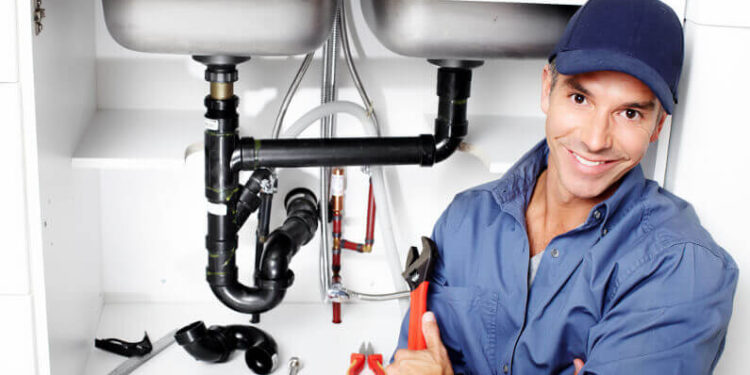Plumbing is one of the most essential systems in any building, ensuring the safe distribution of water and the removal of waste. Without proper plumbing, daily life would be inconvenient, unsanitary, and even hazardous. For homeowners, landlords, and property managers, understanding plumbing basics can prevent costly repairs and improve the long-term value of a property. In this detailed guide, we will explore everything from common plumbing systems to maintenance practices and solutions for frequent issues.
Understanding Plumbing Systems
Every property relies on a plumbing system that includes water supply, distribution, and drainage. To manage it effectively, one must know the main categories.
Water Supply System
The water supply system delivers clean, potable water into the building. It typically connects to the municipal supply or a private well and includes:
-
Main shut-off valve
-
Cold and hot water lines
-
Water meter
-
Fixtures such as taps, showers, and appliances
Drainage and Waste System
Equally important is the drainage network, which removes wastewater efficiently. This system relies on:
-
Soil pipes and waste pipes
-
Vent pipes that prevent airlocks and sewer gas build-up
-
Traps that keep unpleasant odours out
-
Connection to the sewer line or septic tank
Ventilation System
Vent pipes allow air circulation within the drainage system, maintaining proper pressure and preventing blockages. A poorly ventilated system often leads to gurgling sounds and slow drains.
Common Plumbing Materials
The choice of plumbing materials impacts durability, safety, and maintenance costs.
-
Copper Pipes: Long-lasting, corrosion-resistant, and ideal for hot water lines.
-
PVC Pipes: Lightweight, easy to install, and commonly used for drainage.
-
PEX Pipes: Flexible plastic pipes that are popular in modern plumbing for both hot and cold supply.
-
Cast Iron Pipes: Found in older homes, durable but prone to rust.
-
Stainless Steel Pipes: Expensive but excellent for coastal or high-corrosion environments.
Understanding which material runs through your property helps when planning maintenance or replacements.
Frequent Plumbing Issues and Solutions
Even well-installed systems face wear and tear. Knowing common problems helps you act quickly.
Leaking Taps
A dripping tap wastes water and increases bills. Most leaks occur due to worn washers or seals. Replacing these small components often solves the problem instantly.
Blocked Drains
Grease, hair, soap scum, and debris cause blockages in sinks, showers, and toilets. Using strainers, avoiding grease disposal down sinks, and routine cleaning helps reduce clogs. For persistent issues, professional jetting or rodding may be required.
Low Water Pressure
Causes include mineral build-up, leaks in supply lines, or faulty pressure regulators. Checking for visible leaks and descaling taps and showerheads are effective first steps.
Running Toilets
A common problem where the toilet continues filling after flushing, often caused by faulty flapper valves. Replacing the valve usually restores normal function.
Burst Pipes
Burst pipes can flood a home and cause structural damage. Freezing weather, corrosion, or high pressure are typical culprits. Insulating pipes in cold climates and monitoring pressure prevents such emergencies.
Preventive Plumbing Maintenance
Prevention is cheaper than emergency repairs. Implementing regular maintenance practices helps extend the system’s lifespan.
-
Inspect pipes and joints annually for leaks, corrosion, or wear.
-
Clean drains with eco-friendly solutions to prevent clogs.
-
Flush water heaters yearly to remove sediment build-up.
-
Check water pressure regularly using a gauge.
-
Insulate exposed pipes to protect against freezing.
Keeping a maintenance log ensures issues are identified early.
Plumbing in Kitchens and Bathrooms
Kitchens and bathrooms are the busiest areas for plumbing use.
Kitchen Plumbing
Kitchens typically include sinks, dishwashers, and water supply to refrigerators. Issues often involve:
-
Blocked sink drains
-
Leaking dishwashers
-
Faulty garbage disposals
Bathroom Plumbing
Bathrooms contain toilets, showers, baths, and basins. Frequent issues include:
-
Dripping showerheads
-
Slow-draining bathtubs
-
Toilet cistern problems
Fitting high-quality fixtures and scheduling regular servicing prevents recurring issues.
Sustainable Plumbing Practices
With rising awareness of environmental concerns, sustainable plumbing has become a priority.
-
Low-flow taps and showers reduce water consumption.
-
Dual-flush toilets conserve water per flush.
-
Rainwater harvesting systems supply irrigation and outdoor water needs.
-
Greywater recycling reuses lightly used water for landscaping.
-
Tankless water heaters reduce energy consumption by heating water only when needed.
Investing in eco-friendly systems not only saves money but also supports environmental responsibility.
The Importance of Professional Plumbing Services
While minor issues like changing a washer can be DIY-friendly, many tasks require professional intervention. Certified plumbers ensure compliance with regulations, use the correct tools, and prevent further damage. Services such as pipe relining, system upgrades, and emergency repairs should always be handled by experienced professionals.
Plumbing Safety Tips
Ignoring safety can lead to injury or damage. Follow these best practices:
-
Always shut off the main valve before major work.
-
Wear protective gloves when handling tools or chemicals.
-
Avoid mixing chemical drain cleaners, as they can produce harmful reactions.
-
Use correct tools to prevent damage to fixtures.
FAQs About Plumbing
What should I do if I have a sudden leak?
Turn off the main water supply immediately and call a professional plumber to assess and repair the issue.
How often should I service my water heater?
Water heaters should be serviced once a year to flush sediment, check the anode rod, and ensure safe operation.
Can low water pressure be fixed without replacing pipes?
Yes, often the issue is due to mineral deposits or faulty regulators. Cleaning aerators or replacing small components usually restores pressure.
Is it safe to use chemical drain cleaners?
They can be effective but may damage pipes over time and pose safety risks. Natural alternatives like baking soda and vinegar are safer for both pipes and the environment.
Why does my toilet keep clogging?
Repeated clogs often indicate issues with what’s being flushed, poor pipe slope, or hidden blockages in the sewer line.
What is the best way to prevent frozen pipes in winter?
Insulating exposed pipes, leaving taps dripping during freezing nights, and maintaining indoor heating reduce the risk of freezing.





